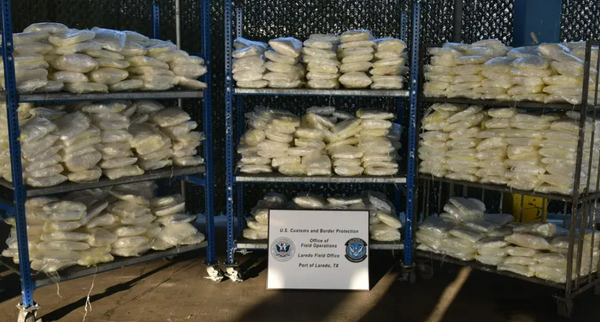It's time for year-end financial moves. The right steps can help you cut your taxes, pump up retirement savings and make your spendable dollars go further. Advisors from Wells Fargo and other financial firms recommend end-of-2022 money moves that can enable you to achieve those goals.
Each of these steps can be accomplished even in the brief few weeks remaining in 2022. Here are seven such savvy money maneuvers.
Wells Fargo Expert: Deduct Now, Not Later
Accelerate deductions. That's financial jargon for spend more now, not later. Why spend at all? To see if you can rack up enough itemizable deductions to use on your 2022 tax return. It will be harder to itemize deductions on your 2023 return. That's because next year the standard deduction rises to $27,700 for married joint filers from this year's $25,900. For single filers, it will rise to $13,850, up from this year's $12,950.
Itemizable deductions you can try to spend this year rather than next year include charitable donations. And they include state and local income and property taxes.
Bear in mind that you cannot deduct more than $10,000 in any year in state and local income, sales and property taxes combined.
As for mortgage interest, generally you can deduct mortgage interest on up to the first $750,000 in mortgage debt if you are a single filer or married joint filer.
The old mortgage-size cap of $1 million still applies to homes bought between Oct. 13, 1987, and Dec. 16, 2017.
It also applies to some homes bought prior to April 1, 2018. "The home purchase must have been under contract before Dec. 15, 2017," said Jesse Little, senior director of advice and planning for Wells Fargo Wealth & Investment Management. "And the mortgage must have closed before April 1, 2018."
In any case, you can't deduct any tax payment if you don't have the official tax assessor's bill in hand yet.
That means you can deduct your 2023 property tax on your 2022 tax return only if you get the property tax bill and pay it before Dec. 31, 2022.
Harvest tax losses. Many assets have plunged in value in 2022. That includes stocks, bonds and mutual funds. And don't overlook cryptocurrencies that have declined in value, says Michael Schulman, chief investment officer of Running Point Capital Advisors.
The silver lining to this year's market decline is that you can use capital losses to wipe out otherwise taxable gains.
But there are limits. You must first use losses on your investments to offset capital gains of the same type. That means you must first use short-term losses against short-term gains. And you must apply long-term losses against any long-term gains. If you have net losses of either type left over, you can then deduct them against the other kind of gain.
After that, if you have an overall net capital loss for the year, then you can deduct up to $3,000 of that loss against other kinds of income, including salary and interest.
After that, if you still have any excess net capital loss outstanding, you can carry that over to later years to offset gains and up to $3,000 worth of other income.
Also remember: tax-loss harvesting applies only to taxable accounts, not to tax-deferred accounts like IRAs, Schulman says.
Don't Forget Your RMDs
Take RMDs. Remember the deadline for taking required minimum distributions (RMDs) is Dec. 31. If you miss the deadline, you'll expose yourself to a penalty of 50% on the amount you were supposed to take. Most big financial firms largely automate the process on their websites.
Your first RMD must be taken by April 1 of the year after you turn 72. That deadline applies to people born after July 1, 1949.
If you were born before July 1, 1949, you must begin taking RMDs by April 1 of the year following the year you turn 70-1/2.
No matter when you were born, RMDs after your first one must be taken by Dec. 31 each year.
And special deadlines generally apply to inherited retirement accounts that are subject to RMDs.
Also, RMDs do apply to Roth-style 401(k) accounts (unless you're still working where that account is based). But RMDs are not required from Roth IRAs, unless you inherit one from a non-spouse.
Save For Retirement
Boost 401(k) contributions. Let's say you are not on track to contribute the maximum allowed by year end. And suppose you realize you can afford to kick in more. If your plan lets you make adjustments on short notice, now's the time to try to max out your 2022 contributions. You won't have to pay tax on money that you pony up, says Lyle Solomon, principal attorney and a financial advisor at Oak View Law Group.
Make a Roth conversion. One of the best times to make a Roth conversion — either with your IRA or your 401(k) account — is in a year when the market is down. Because any stocks, bonds and funds that you convert are worth less, you'll owe less income tax on the amount converted than if you make the conversion in a year when those securities post gains, says Paul Schatz, president of Heritage Capital.
The key advantage to a Roth account is that once you withdraw money, any earnings plus your initial deposit will be tax-free after you turn age 59-1/2 and the account is five years old.
Wells Fargo: Depreciate Now
Take the bonus depreciation. That's a rule which lets a business deduct 100% of an eligible capital expenditure's depreciation in the year of purchase. Say you buy a $50,000 piece of equipment, and your taxable income is far above that. This rule lets you take a depreciation deduction of the entire $50,000. If your corporate tax rate is 21%, for instance, the deduction is worth $10,500.
You can do it with expenditures for business equipment, furniture and land improvements, but not just land. Small-business owners, including sole proprietors, can use this.
But act now because this opportunity is going to disappear. The bonus depreciation will be reduced by 20 percentage points annually, starting next year. It ends totally in 2027, says Little from Wells Fargo.
Charity That Helps You
Make a qualified charitable distribution (QCD). Also known as IRA charitable distributions, QCDs have multiple benefits. They enable you to make a charitable contribution. The same money satisfies your annual RMD quota from a traditional or inherited IRA.
You're eligible if you are at least 70-1/2 years of age. You can donate up to $100,000 directly from your IRA to an eligible charity.
Since the money goes directly from your IRA and satisfies your RMD, it is not counted as part of your taxable income for the year. That can help you avoid rising into a higher federal tax bracket, Little of Wells Fargo says. And it can help income phaseouts of eligibility for other tax deductions.
Follow Paul Katzeff on Twitter at @IBD_PKatzeff for tips about personal finance and strategies of the best mutual funds.







